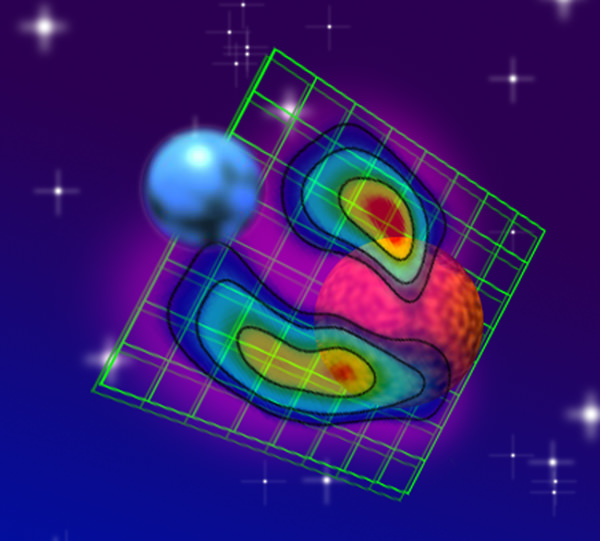Giant Magnetic Loop Stretches Between Two Stars
Posted: Sun Jan 17, 2010 3:02 am
G'day from the land of ozzzzzz
Giant Magnetic Loop Stretches Between Two Stars
January 13th, 2010
Giant Magnetic Loop Stretches Between Two Stars
January 13th, 2010
The more we observe the more we learn and begin to understand.Using a collection of radio telescopes, astronomers have found a giant magnetic loop stretched outward from one of the stars making up the famous binary star system Algol, located in the constellation Perseus. "This is the first time we've seen a feature like this in the magnetic field of any star other than the Sun," said William Peterson, of the University of Iowa.
The double star system, 93 light-years from Earth, includes a star about 3 times more massive than the Sun and a less-massive companion, orbiting it at a distance of 5.8 million miles, only about six percent of the distance between Earth and the Sun. The newly-discovered magnetic loop emerges from the poles of the less-massive star and stretches outward in the direction of the primary star. As the secondary star orbits its companion, one side — the side with the magnetic loop — constantly faces the more-massive star, just as the same side of our Moon always faces the Earth.



